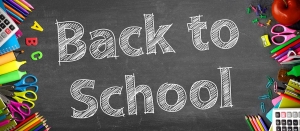
The 2016 back-to-School spending report card for households with school-age children (pre-school through 12th grade) indicates that parents do not plan to spend significantly more this year. Consumers signaled only a 3.9% increase, with an anticipated average spend of $675.00 (versus $650 in 2015), according to the 22nd annual survey conducted by Brand Keys (www.brandkeys.com), the New York-based brand loyalty and emotional engagement research consultancy.
When asked reasons for the small increase in anticipated back-to-school spending, nearly three quarters of respondents (73%) mentioned a feeling of “uncertainty,” “anxiety,” and “unpredictability,” with only 18% mentioning “the economy.” When pressed to explain the causes of these feelings, consumers mentioned the upcoming Presidential elections (58%), income/wealth distribution (47%), crime and violence (44%), unemployment (30%), race relations (22%) and a general feeling of insecurity related to terrorism (19%). Apparently it’s not just consumer confidence in the economy, this year it’s a lot more than that.
Average anticipated spending in all major back-to-school categories – with the exception of the tech category, where the upgrade replacement cycle has kicked in, were generally unchanged versus last year:
Clothing: $278.00 (+ 3%)
Shoes (athletic & dress) $125.00 (+ 5%)
Supplies $ 92.00 (+ 2%)
Computers/Electronics/
Tablets/Smartphones: $180.00 (+20%)
Books/Study Aids $ 20.00 (–10%)
The survey included assessments from 7,580 households drawn from the nine U.S. Census regions. Interviews were collected by telephone and central location intercepts (to account for the surging number of cell-phone only households) over the period July 29th through August 12th 2016. The breakdown of “preferred” retail categories versus last year’s indicates an anticipated use of all retail platforms.
The biggest increases in the choice of where to buy appeared in Department Stores (+10%) and Office Supplies (+5%). Department stores have been battling the consumer shift to online with lots of deals. Catalogs were down again, but that shouldn’t surprise anyone. Consumer purchases have shifted from print to digital and online has been growing every year. It’s become the consumers’ shopping default mode with virtually every consumer interviewed (99%) indicating they were going to use online for back-to-school buying.
Online 99% (+ 4%)
Discount Stores: 98% (- 1%)
Department Stores: 65% (+10%)
Specialty Retailers 50% (- 5%)
Office Supply: 40% (+ 5%)
Catalogs 7% (-13%)
Top 10 Retailers and Etailers
This year, Brand Keys’ top 10 lists of the most popular retail brands includes Kohl’s, with Apple stores being pushed to #11. Walmart moved to the #1 spot ahead of Target (last year’s #1 retailer) and Macy’s fell from #3 to #5, reflecting ongoing difficulties the retailer has had over the past year. For e-tail brands, Apple.com is #3, reflecting the shift in shopping from traditional stores to digital. Sears.com replaced Nike.com in this year’s top 10.
The top-10 in each category were:
Retail E-tail
- Walmart Amazon.com
- Target Walmart.com
- CVS/Walgreen’s Apple.com
- Best Buy Target.com
- Macy’s Staples.com
- TJ Maxx Macys.com
- Kohl’s Bestbuy.com
- Sears Gap.com
- Footlocker Sears.com
- Staples Overstock.com
More than half (55%) of consumers indicated they had already stockpiled for the first day of school in pre-August shopping, up 18% over last year. Another 30% indicated they would wait for the annual ‘Summer Sales.’ The remaining 15% are waiting till the last minute. Retailers have spent nearly two decades teaching consumers they can get things cheaper or for better value if they wait a little longer, and when it comes to back-to-school buying, consumers have been fast learners.
Value, of course, isn’t just about pricing, it’s about brand differentiation, and brand engagement. And, this year, apparently more fundamental issues. Retail brands that can emotionally engage consumers are seen as surrogates for added value and those will be the brands that benefit most. Consumers not only believe that, they behave that way in the marketplace. And these days, providing more than just low-lower-lowest prices is a fundamental lesson all back-to-school retailers will need to cram for if they hope to pass with flying colors. And see increased same-store sales.
Find out more about what makes customer loyalty happen and how Brand Keys metrics is able to predict future consumer behavior: brandkeys.com. Visit our YouTube channel to learn more about Brand Keys methodology, applications and case studies.
Share this: